Contents
Orange wrinkled whip (Pluteus aurantiorugosus)
- Division: Basidiomycota (Basidiomycetes)
- Subdivision: Agaricomycotina (Agaricomycetes)
- Class: Agaricomycetes (Agaricomycetes)
- Subclass: Agaricomycetidae (Agaricomycetes)
- Order: Agaricales (Agaric or Lamellar)
- Family: Pluteaceae (Pluteaceae)
- Genus: Pluteus (Pluteus)
- Type: Pluteus aurantiorugosus (Orange-wrinkled Pluteus)
- Agaricus aurantiorugusus Trog
- Pluteus caloceps G.F. Atk.
- Pluteus coccineus (Massee) JE Lange
- Pluteus leoninus var. coccineus Massee
- Plutey orange
- Plyutei red
- Plyutey orange-wrinkled.

The current name is Pluteus aurantiorugosus (Trog) Sacc.
The etymology of the name is from the Latin pluteus, im and pluteum, in 1) a movable canopy for protection; 2) immovable defensive wall, parapet and aurantiacus (lat.) – orange, orange, + rugosus (lat.) – wrinkled, folded.
head небольшая диаметром около 2-5 см выпукло-колокольчатая с подогнутым краем в молодости, затем при созревании становится выпуклой, плоско-выпуклой, иногда сохраняя слабовыраженный бугорок, негигрофанная. Даже у созревших грибов шляпка не становится плоской, вогнутой.
В окраске шляпки преобладают желто-оранжевые, оранжевые, оранжево-красноватые тона с тенденцией выцветания к краю. Центр, как правило, окрашен ярче — вплоть до ярко-алого цвета. Поверхность вначале гладкая блестящая с ровным краем, с возрастом приобретает шероховатую зернистость, похожую на мелкие жилки и складки, по мере созревания складчатость становится более очевидной (впрочем, этот признак может быть слабо выражен, или и вовсе отсутствовать). Фото фрагмента шляпки:
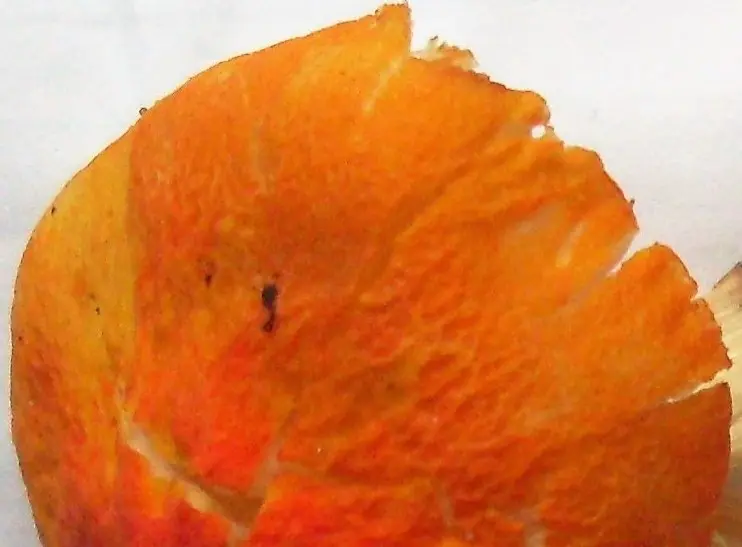
Pulp white, pale yellowish, does not change color on the cut.
Taste and smell – neutral, slightly pronounced, some sources indicate a slightly bitter aftertaste.
Hymenophore mushroom – lamellar. The plates are free wide (up to 7 mm), often located. In young mushrooms, they are white, with age they acquire a light pink, pink color characteristic of plutei. The edge of the plates is even or finely fringed, often painted yellowish.
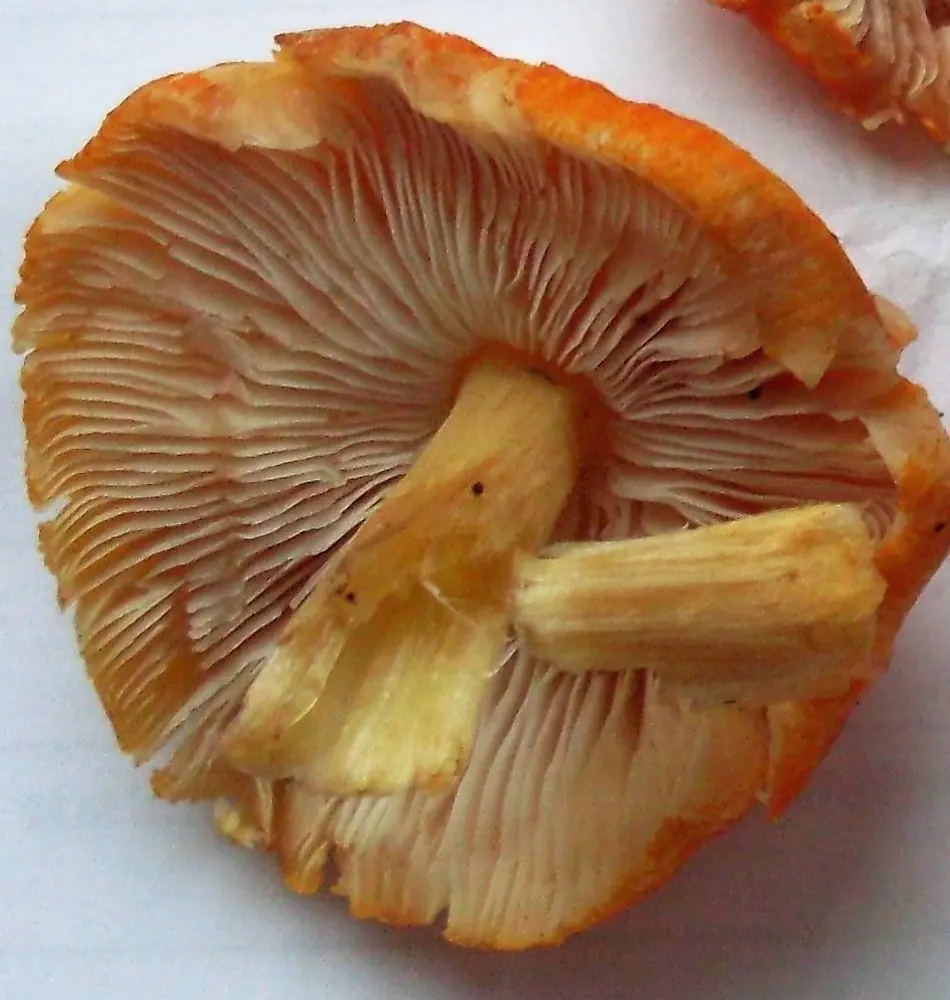
Spores are smooth, ellipsoid, 5,5-6,5 × 4,2-5 µm. Spore print pink
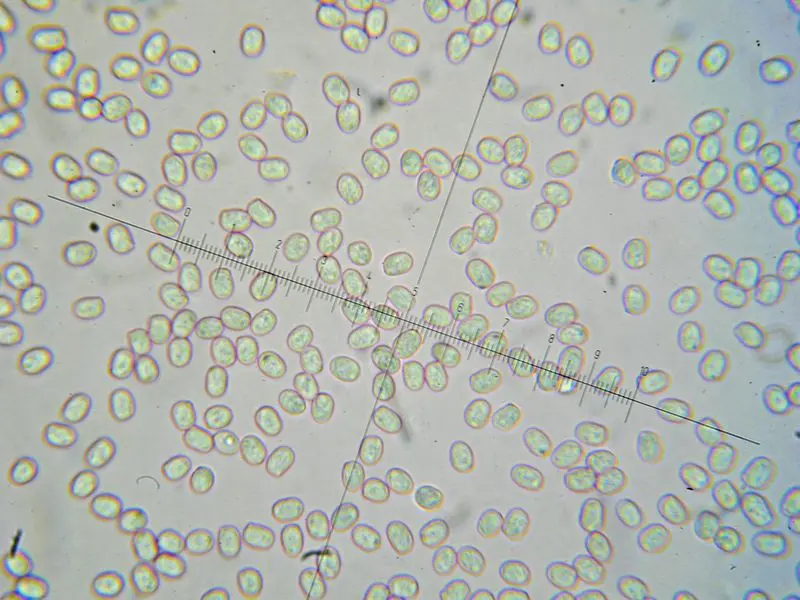
Basidia 18–31 × 6–7.5 µm, club-shaped, 4-spored;
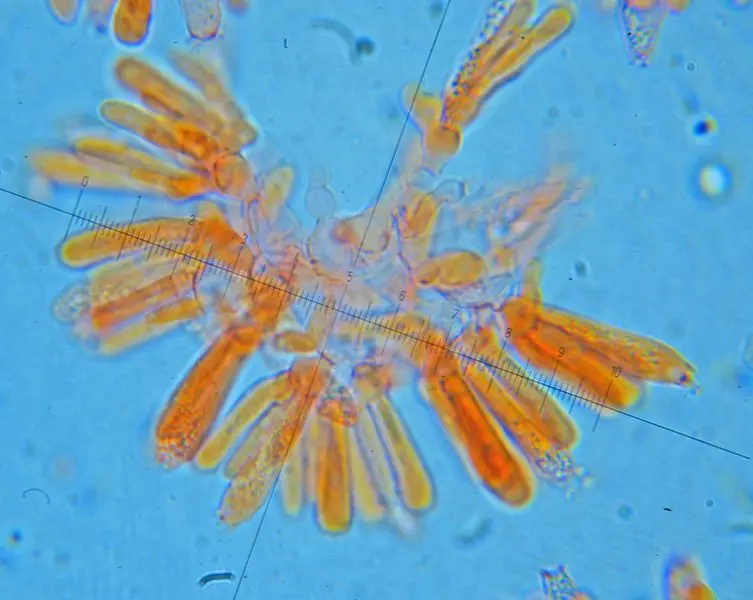
Cheilocystidia 30–65 (70) × 20–40 (45) µm, colorless club-shaped or pear-shaped.
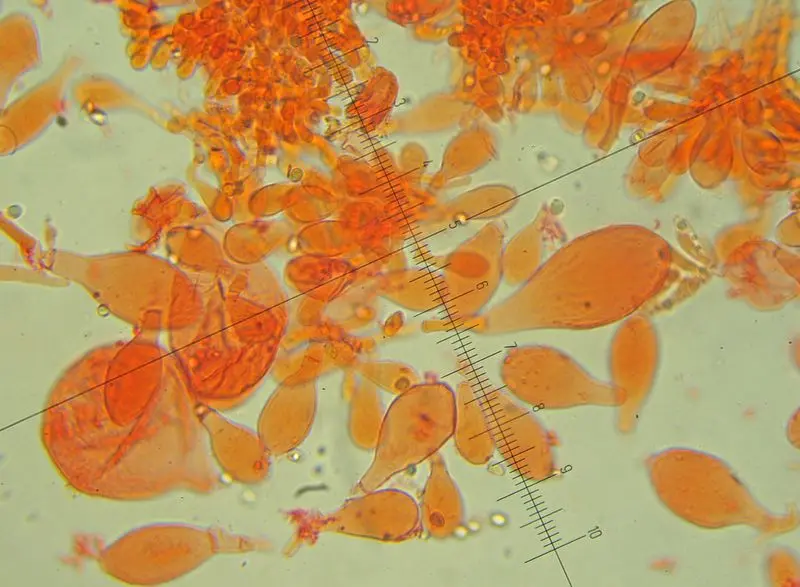
Pleurocystidia 40-80×15-30 µm, fusiform-club-shaped or bottle-shaped, colorless, rarely with a grayish pigment.
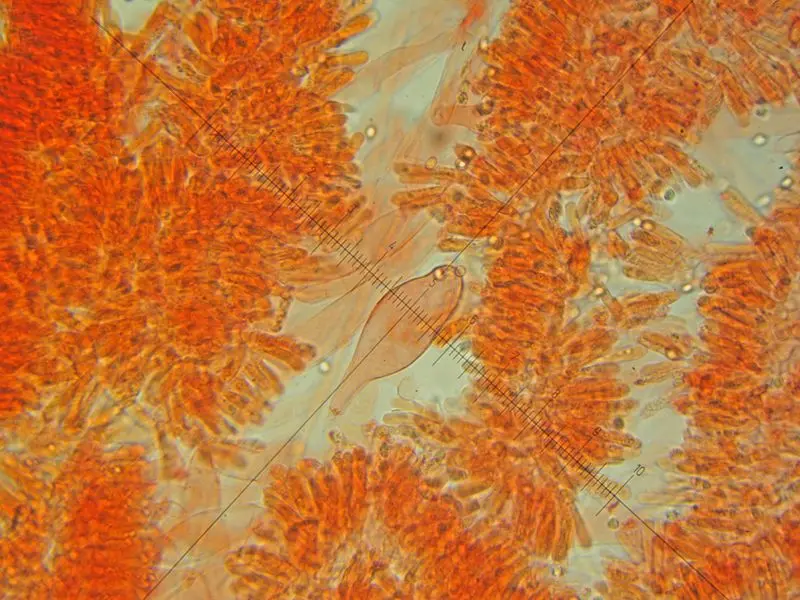
Pileipellis is formed by hymeniderm from club-shaped, flask-shaped and pear-shaped elements with an intracellular pigment from yellow to bright orange.
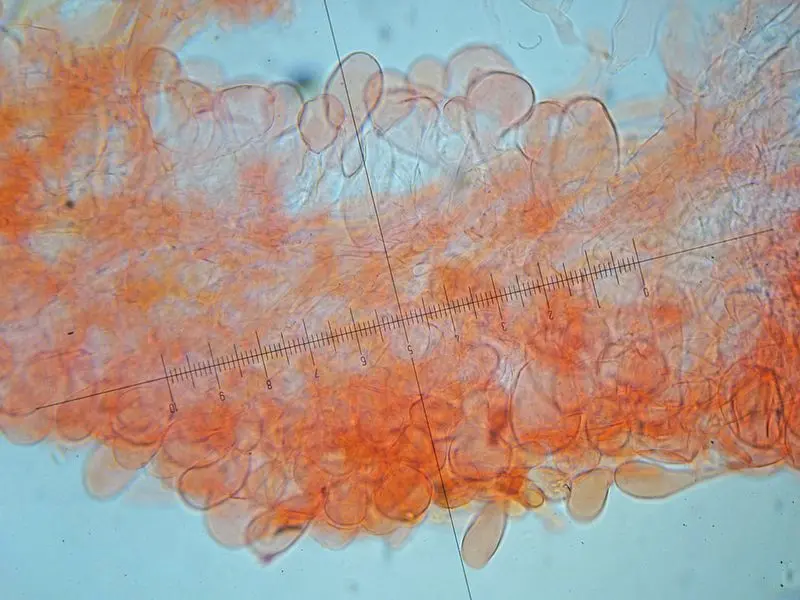
Leg central (sometimes may be slightly eccentric) 3 to 8 cm long and 0,5 to 1 cm wide, cylindrical with a slight thickening towards the base, often curved, slightly pubescent and fibrous. The color of the stem at the cap is whitish, along the entire length it is yellowish, at the base it is often a darker shade with orange-reddish fibers.
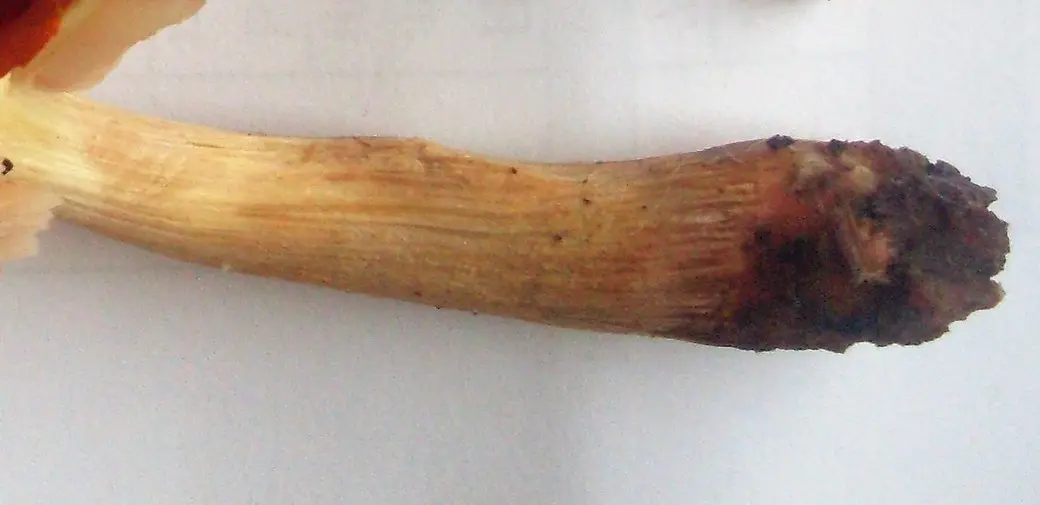
leg pulp yellow in color and rather loose and fragile.
The orange-wrinkled whip grows on stumps, dead wood, or on the trunks of various broad-leaved trees that have fallen to the ground, preferring poplar, alder, elm, ash and maple. The literature describes rare isolated cases of fungus finds on pine trees. The distribution area is quite extensive, it is found in the countries of the Northern Hemisphere, although quite rarely. Grows singly and in small groups. Fruiting season: summer and autumn.
There is no information about toxicity, but the mushroom is considered inedible due to its rarity, small size and lack of taste.
It is similar to some species of the genus of whips that have a yellow color.

Lion-yellow whip (Pluteus leoninus)
It differs in color (absence of orange, bright scarlet tones) of the cap and microscopic features, and Pluteus leoninus grows mainly in oak and beech forests.
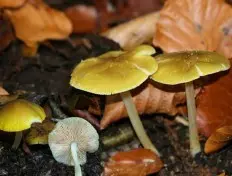
Golden-colored whip (Pluteus chrysophaeus)
and Pluteus romellii are yellowish, but by no means orange-reddish.
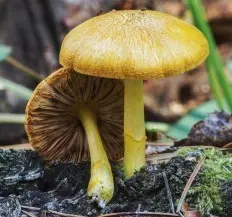
Fenzl’s Pluteus (Pluteus fenzlii)
easy to distinguish by the ring on the leg.
Фото: Данил, Андрей (Сайту нужны фотографии этого вида!)
Микроскопия: funghiitaliani.it









